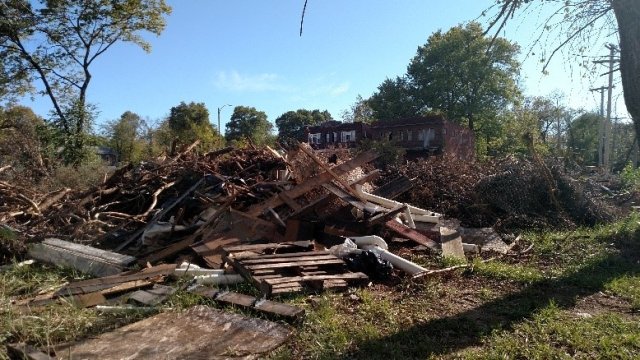Illegal Dumping
2025 Illegal Dumping Prevention Guide
Illegal dumping is a serious problem in many U.S. communities. It can threaten public health, safety, property values, and quality of life. Demolitions, moving, and evictions may result in the dumping of construction and demolition debris or other household items in the community. Motives for offenders might include those running unpermitted transfer stations or recycling operations that are then abandoned or demolition contractors avoiding disposal costs by illegally dumping their waste at either vacant or rural locations.
The On the Road to Reuse: Residential Demolition Bid Specification Development Tool includes contract language to help organizations manage and track the proper disposal of demolition materials.
The 2025 EPA Illegal Dumping Prevention Guide (pdf) (5.1 MB) outlines some actions communities can take to prevent illegal dumping. Successful illegal dumping prevention programs are built on a foundation of:

- Accessible options for waste disposal and sustainable materials management
- Informative, accessible, and broad outreach and education programs
- Strong support from local leaders
- Collaboration between authorities, communities, and industries
- Site management and maintenance
- Celebrating and sharing achievements
The guide presents a variety of strategies and case studies from communities across the country. Examples include:
- Employing apps and mapping technology to monitor and identify frequent dumping locations.
- Supporting local code enforcement actions and creating a prosecutorial system for nuisances such as illegal dumping sites.
- Encouraging collaboration among a variety of agencies to tackle illegal dumping issues.
- Establishing funding mechanisms to assist in the cleanup of frequently dumped items.
The EPA’s 1998 Illegal Dumping Prevention Guide (981 K) also examines the issue of illegal dumping and outlines a variety of actions communities have taken prevent and manage illegal dumping in their community.
